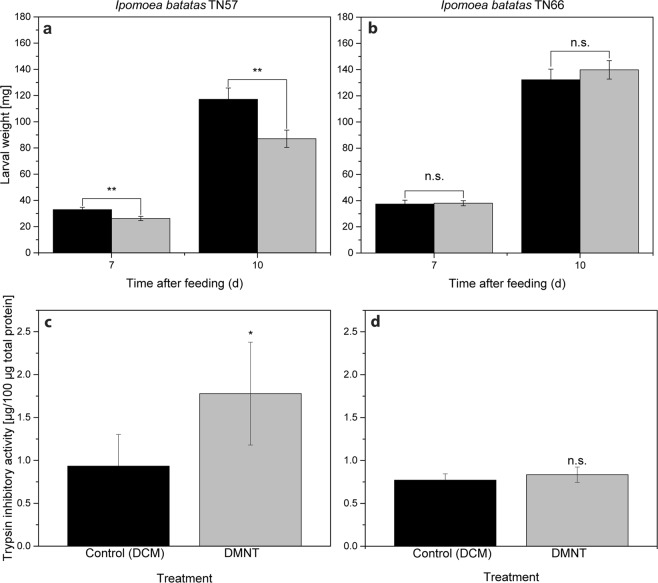Figure 3.
Airborne DMNT increases defense capabilities in Ipomoea batatas TN57. (a,b) Larval weight of S. litura after feeding for 7 d and 10 d on DCM (control) or DMNT- treated TN57 (a, n = 16) or TN66 (b, n = 25) plants. For DMNT treatment, plants were incubated with 3.9 nM for 3 h. (c,d) Trypsin inhibitory activity of TN57 (c, n = 5) and TN66 (d, n = 6) after incubation with 3.9 nM of DMNT for 3 h. Bars represent the mean ± SEM of larval weight or trypsin inhibitory activity for control (DCM, black bars) and DMNT treatment (gray bars). Significance levels are indicated by the asterisks (n.s. = non-significant; *p < 0.05; **p < 0.01). (a) TN57: p (CxDMNT) = 0.002; (b) TN66: p (CxDMNT) = 0.468. (c) TN57: p (CxDMNT) = 0.028; (d) TN66: p (CxDMNT) = 0.207. Asterisks indicate significant differences between control and DMNT treatment, based on a t-test (c,d) and ANOVA followed by a Tukey- adjusted comparison based on a linear model (a,b).

